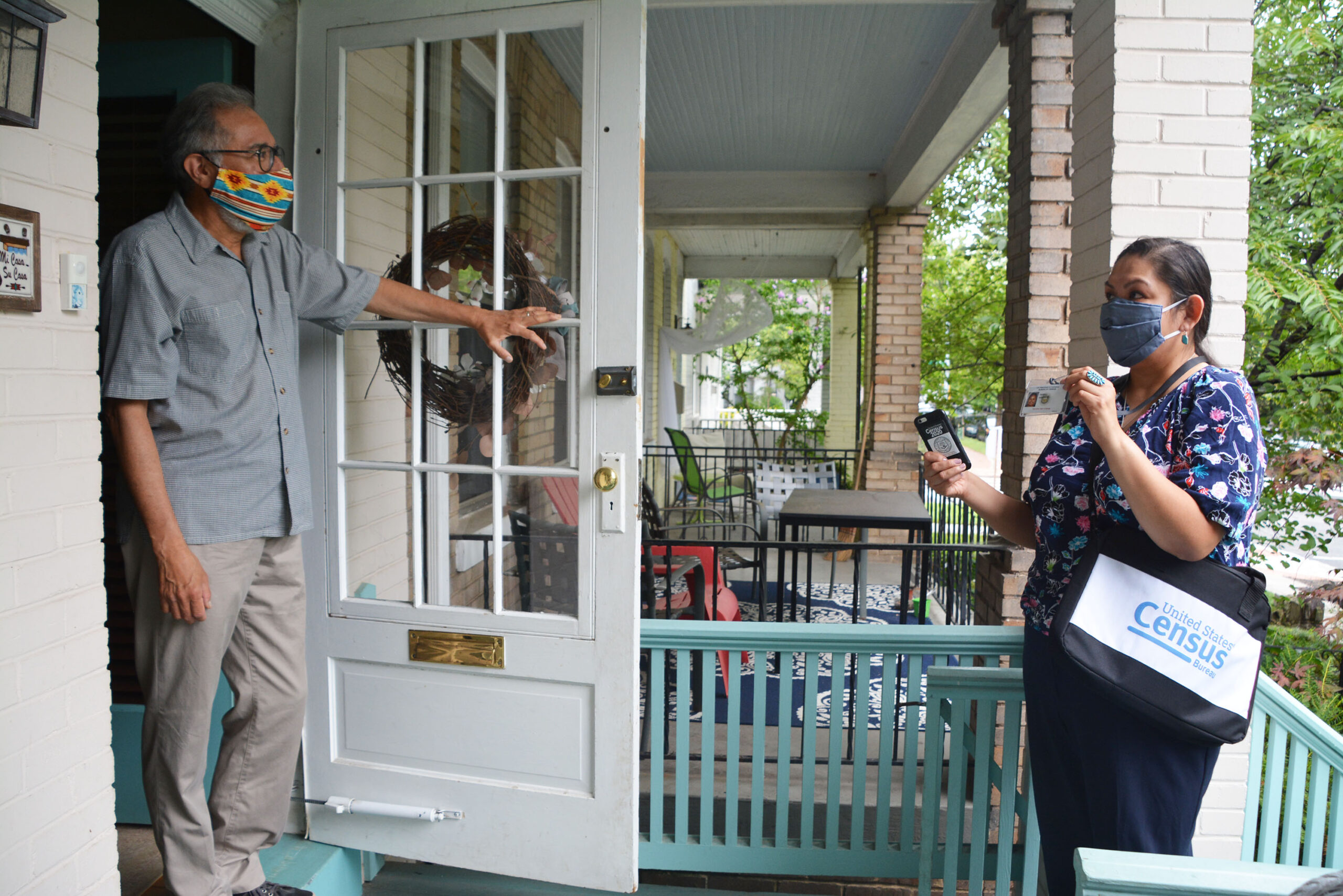
WINDSOR TERRACE — If you haven’t filled out your Census 2020 form, expect a knock on your door at some point over the next few weeks.
Census workers started going door-to-door during the first week of August, visiting New Yorkers who did not fill out their census forms either online or by mail. The census takers, who are federal employees and take an oath not to reveal any information they gather, will be asking residents how many people live in their homes.
The door-to-door visits will continue until Sept. 30. After that, the data collected will be processed and released as statistics by December 31, as required by federal law.
Jeff Behler, director of the U.S. Census Bureau’s New York Region, said 17,000 census takers are being dispatched in New York City — 8,000 to 9,000 of them in Brooklyn and Queens.
So, far, New York City has a 55.3 percent response rate but Behler said he expects the percentage to go up. During the 2010 Census, the city’s final response rate was 62 percent compared to the national average of 76 percent.
Given the fact that the Census 2020 count began when the COVID-19 was at its peak in the city, Behler is “amazed New York City even got to 55 percent,” he told The Tablet.
New York City, through its Complete Count Campaign, a $40 million program aimed at increasing the number of people who respond to the census, established community partners to help spread the word about the importance of filling out the census form.
The community partners included grassroots groups and local institutions, such as churches and libraries. More than 500 groups applied to become community partners and the city chose 150, including Catholic Charities Brooklyn & Queens.
Nina Valmonte, Census project manager for CCBQ, said the agency promoted census participation through social media posts, setting up phone banks to call residents, and by distributing information at COVID-19 relief events such as the pop-up food pantries it set up.
“Catholic Charities is a trusted messenger because we have worked in communities for a long time,” Valmonte told The Tablet. “Our goal was to reach people in underserved communities like immigrant and minority communities. These are communities that we have always served.”
“Our parishes would have been our natural conduits for distributing information but they were closed for a long time because of COVID,” she added.
Still, CCBQ found a way to work with parishes, despite COVID. “We used their virtual bulletins,” Valmonte said.
CCBQ has engaged with 250,000 people during its census outreach, Valmonte said.
To help prevent the spread of COVID, all census takers now going door-to-door are required to wear masks and carry hand sanitizer. The workers have been trained to practice social distancing and stand six feet from a person’s front door.
Census takers can be identified because they wear a government ID badge that contains their photograph with a U.S. Department of Commerce watermark. If a homeowner wants to verify a census taker’s identity, the homeowner can call the New York Regional Census Center at 212-882-7100 to speak with a representative.
The census, which is conducted once every 10 years, is mandated by the Constitution and is supposed to act as a count of every person living in the United States. The data collected is used to determine how many seats each state gets in the House of Representatives and the amount of federal funding states and communities get for schools, transportation, road repairs, hospitals, and other items.
“The data we collect is confidential and is protected by federal law. I know people are frightened to answer questions from the government. We don’t ask for your citizenship status,” Behler told The Tablet.
Msgr. James Kelly, chairman of the board at St. Brigid’s Immigration Services in Bushwick, said the census isn’t a high priority for his clients.
“It’s the last thing on their minds right now,” Msgr. Kelly told The Tablet. “They’re talking about the virus, they’re worried about DACA, getting visas for their relatives, and other things.”
Despite assurances that the Census Bureau doesn’t share information with other government agencies, Msgr. Kelly said immigrants are still concerned.
“People are afraid. If you give information to the government, what happens to that information?” he said.
Father Ruskin Piedra, the founder and director of the Juan Neumann Center, an immigrant assistance program housed at the Basilica of Our Lady of Perpetual Help in Sunset Park, said there might be reasons undocumented immigrants are skittish.
“A block over, ICE (U.S. Immigration and Customs Enforcement) showed up at 4 in the morning and pulled people out,” he said.
Piedra added, however, that he encourages people to answer the census “because it’s important to get an accurate count to make sure the community gets the funding it needs.”
Behler also urged everyone to participate so that people can be counted.
“If you don’t fill it out, you become invisible,” he said.
